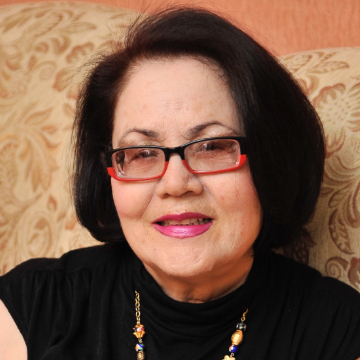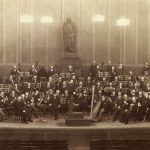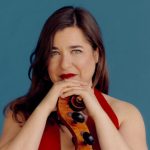May 13, 2023
Spivey Hall
Morrow, GA
Behzod Abduriamov, piano.
César FRANCK: Prélude, Fugue et Variation
Alexander SCRIABIN: Sonata No. 5, Op. 53
Dilorom SAIDAMINOVA: The Walls of Ancient Bukhara
Maurice RAVEL: Gaspard de la nuit
Sergei RACHMANINOFF: Prelude Op. 32 No. 5 in G major
Sergei RACHMANINOFF: Prelude Op. 23 No. 5 in G minor
Sergei PROKOFIEV: Ten Pieces from Romeo and Juliet
William Ford | 17 MAY 2023
Spivey Hall on the Campus of Clayton State University hosted a triple crown of piano superstars this year: first, there was Andsnes, followed by Hough, and finally, Abduraimov. It’s almost impossible to comprehend how this all came together, but indeed it did, and the world of classical music was the better for it.
Each of the pianists had a different playing style and a different stage presentation, but all played brilliantly.
Yesterday’s recital was by the last, but not least, of the triumvirate — Behzod Abduriamov. Abduraimov is an acclaimed 32-year-old Uzbek pianist born in Tashkent, Uzbekistan. He began studying piano at the Uspensky State Central Lyceum at the age of five, and by the time he was 11, he had won his first international competition. Abduraimov’s rise to prominence began in 2009 when he won the London International Piano Competition. Critics and audiences have praised him for his virtuosic technique and ability to convey deep emotion in his performances.
The recital began with César Franck’s Prélude, Fugue et Variation, which is a classic example of a Baroque-influenced French Romantic piano work. It was originally composed for organ and was arranged for piano by Harold Bauer in 1910. The work consists of three movements: a slow, lyrical Prelude, a fast, contrapuntal Fugue, and a slower, more lyrical Variation. The fugue section was most certainly influenced by Bach, with its theme presentation, imitations, and counterpoint. The final movement begins with the theme of the Prelude in the right hand, accompanied by arpeggiated chords in the left. After several iterations of the theme with different accompaniments, the movement ends with another statement of the opening melody. Abduraimov’s performance of the work was excellent. He had a lean tone that spotlighted the intricate structure of the piece, and his tone on the Steinway piano was richly warm and romantic.
Next was Dilorom Saidaminova’s The Walls of Ancient Bukhara. composed in 1973. It is a lyrical ten-minute piece in three movements. The first movement is slow and contemplative, the second movement is livelier, and the third movement returns to a more reflective mood, incorporating piano passages that recreate the sound of street instruments. The piece is inspired by the ancient city of Bukhara in Uzbekistan, and its walls, which have stood for centuries. Saidaminova’s music is beautiful and lyrical. As noted in the Spivey program notes by Joseph and Elizabeth Kahn, it does seem inspired by Mussorgsky’s Pictures at an Exhibition, and it has passages reminiscent of shades of Ravel. Mr. Abduraimov played with restraint and eschewed over-dramatization of the music. This was also the only piece on the program where the pianist played from a score.
Ravel’s Gaspard de la nuit (1908), a suite of three piano pieces, each of which is based on a poem by Aloysius Bertrand, followed. The first movement, “Ondine,” depicts the eponymous water sprite seducing a mortal man. It features shimmering arpeggios, along with a flowing and lyrical melody in the right hand. The second movement, “Le Gibet,” is a dark and haunting depiction of a hanged man swaying in the wind. It features a repeated tolling bell motif in the left hand, with a somber and mournful melody in the right hand. The final movement, “Scarbo,” is a frenzied and nightmarish depiction of a mischievous and malevolent goblin. It features rapid and complex pianistic textures, along with a range of dynamic contrasts and dramatic shifts in mood. Abduraimov’s performance of the Ravel work was stunning. Every color and texture in the work was apparent, and the incredibly powerful fortes in the finale were rich, filling the hall with the sounds of an extraordinary pianist.
After the intermission, an originally scheduled piece by American Florence Price was replaced with two of Rachmaninoff’s preludes.
The Prelude Op. 32 No. 5 in G major is part of a set of thirteen preludes, Op. 32, which are widely regarded as some of the composer’s most important solo piano works. No. 5 is in ternary form, with a lyrical and expressive A section followed by a more intense and virtuosic B section. The A section features a theme played in the right hand, accompanied by a flowing and arpeggiated left-hand figure. The contrasting B section features rapid and intricate passagework in both hands and a more dramatic and intense emotional character.
The Prelude Op. 23 No. 5 in G minor begins with a melancholic melody in the right hand, with gently rolling left-hand accompaniment. The music gradually builds in intensity and complexity, a range of harmonies, textures, and pianistic techniques. The powerful and virtuosic climax of the piece showcased Abduraimov’s technical skill and control. Further, his body became more involved in these pieces: he leaned into the keyboard more as if to encourage it to give more. In the final movement of the Op. 23 his left foot pounded the sustain pedal to increase the drama of this already very dramatic piece! This appeared to be music with which Abduraimov truly connects, and the result was phenomenal.
The last work on the program was Sergei Prokofiev’s Ten Pieces from Romeo and Juliet, which are character pieces for solo piano based on the composer’s ballet score, each piece depicting a different aspect of the tragic love story. The pieces are characterized by Prokofiev’s distinctive style, with dissonant harmonies, angular melodies, and rhythmic complexity. The composer’s works for small ensembles highlight these characteristics, and so too this piano piece, which demonstrates the work’s abstraction, aggression, but also tenderness. In contrast, the full orchestral version tends to highlight the music’s lushness and beauty. Again, Abduraimov’s playing was technically brilliant, showing strong interpretive intent. On occasion, his tempi were slightly fast, but that added to the drama. Again, he pummeled the Steinway’s sustain pedal to magnify Prokofiev’s intensity.
Mr. Abduraimov has a low-key stage presence and lets his performance speak for itself. The half-full audience stood and recognized his brilliance with repeated curtain calls.
Unfortunately, of the roughly 200 audience members, most were older. With Spivey being on a university campus, one might expect to see more young people. Increasing age diversity is indeed a laudable goal. The student body should experience what a great resource they have on their own campus. ■
EXTERNAL LINKS:
- Behzod Abduraimov: harrisonparrott.com/artists/behzod-abduraimov
- Spivey Hall: spiveyhall.org

Read more by William Ford.








.png)